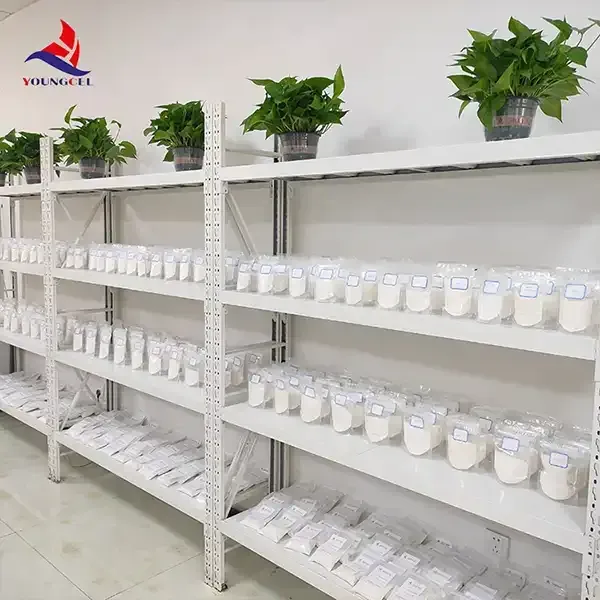កុម្ភៈ . 15, 2025 04:26
Back to list
cellulose
Cellulose, an abundant organic polymer primarily found in the cell walls of plants, has seen transformative innovations in its application across various industries, emphasizing its pivotal role in product development. From traditional uses to cutting-edge innovations, cellulose's unique properties have been harnessed for its sustainability, versatility, and strength, making it indispensable in today’s environmentally-conscious market.
Moreover, in the biomedicine sector, cellulose’s biocompatibility has been harnessed to design scaffolds for tissue engineering and as a stable base for drug delivery systems. These applications underscore cellulose's potential in developing advanced medical solutions, highlighting its versatility beyond traditional uses. Additionally, cellulose is increasingly utilized in the development of biofuels, offering a significant reduction in carbon emissions compared to conventional fossil fuels. The conversion of cellulose into ethanol presents an opportunity for sustainable energy production, contributing to global initiatives aimed at reducing carbon footprints. This facet of cellulose application not only aids in environmental conservation but also fosters innovation in the energy sector. Understanding cellulose's role in these diverse industries requires a deep comprehension of its chemical structure and functional capabilities. Experts in material science and product development recognize the importance of cellulose as not only a raw material but as a catalyst for innovation in creating sustainable solutions. Its adaptability and wide availability make it a linchpin in research focused on addressing global challenges related to sustainability and resource scarcity. As industries continue to evolve, cellulose's relevance in future-oriented product development is indisputable. Its integration into cutting-edge technologies and green business models reflects an industry-wide commitment to sustainable practices. This transition towards using biodegradable and renewable resources sets the stage for cellulose to be at the forefront of ecological advancements, highlighting its role not just in product innovation but also in leading the charge towards a more sustainable industrial future. In conclusion, cellulose's multi-faceted applications underscore its importance in creating sustainable, innovative products that meet modern demands. Through continuous research and development, cellulose is positioned to drive progress across industries, reinforcing its status as a critical component in the quest for environmental sustainability and technological advancement.


Moreover, in the biomedicine sector, cellulose’s biocompatibility has been harnessed to design scaffolds for tissue engineering and as a stable base for drug delivery systems. These applications underscore cellulose's potential in developing advanced medical solutions, highlighting its versatility beyond traditional uses. Additionally, cellulose is increasingly utilized in the development of biofuels, offering a significant reduction in carbon emissions compared to conventional fossil fuels. The conversion of cellulose into ethanol presents an opportunity for sustainable energy production, contributing to global initiatives aimed at reducing carbon footprints. This facet of cellulose application not only aids in environmental conservation but also fosters innovation in the energy sector. Understanding cellulose's role in these diverse industries requires a deep comprehension of its chemical structure and functional capabilities. Experts in material science and product development recognize the importance of cellulose as not only a raw material but as a catalyst for innovation in creating sustainable solutions. Its adaptability and wide availability make it a linchpin in research focused on addressing global challenges related to sustainability and resource scarcity. As industries continue to evolve, cellulose's relevance in future-oriented product development is indisputable. Its integration into cutting-edge technologies and green business models reflects an industry-wide commitment to sustainable practices. This transition towards using biodegradable and renewable resources sets the stage for cellulose to be at the forefront of ecological advancements, highlighting its role not just in product innovation but also in leading the charge towards a more sustainable industrial future. In conclusion, cellulose's multi-faceted applications underscore its importance in creating sustainable, innovative products that meet modern demands. Through continuous research and development, cellulose is positioned to drive progress across industries, reinforcing its status as a critical component in the quest for environmental sustainability and technological advancement.
Next:
Latest news
-
Rdp Powder: Key Considerations for Wholesalers in the Building Materials IndustryNewsJul.08,2025
-
Key Considerations for Wholesalers: Navigating the World of Hpmc - Based ProductsNewsJul.08,2025
-
Hpmc Detergent: Key Considerations for WholesalersNewsJul.08,2025
-
Key Considerations for Wholesalers: China Hpmc For Tile Adhesive, Coating Additives, Concrete Additives, and MoreNewsJul.08,2025
-
Crucial Considerations for Wholesalers: Navigating the World of Construction MaterialsNewsJul.08,2025
-
Key Considerations for Wholesalers Sourcing Additive For Cement, Additive For Concrete, Additive For Putty from Additive Manufacturer Shijiazhuang Gaocheng District Yongfeng Cellulose Co., Ltd.NewsJul.08,2025




